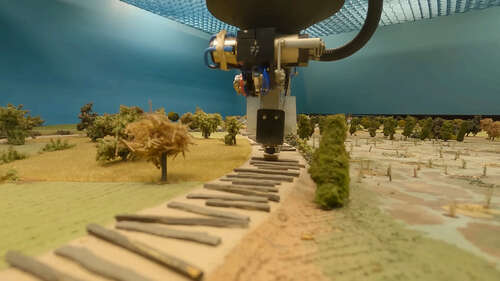
The main components of the FASIP tank simulator include a large green steel cab that simulates the driver’s cab inside the tank hull. Hydraulics power movement in the box and replicate the interior of a tank. The trainee sits inside this mock hull and can see a viewscreen of what appears to be a European town that’s, in reality, a camera operated by a mechanical arm that’s moving through a miniature replica.
The miniature is around 12 meters long and is a highly-detailed terrain model. As the operator inside the cab steers and drives the tank, the robotic trolley and camera move, transmitting the images back to the viewscreen in the cockpit.
Now located in the Swiss Military Museum in Full, Switzerland, the museum curators had to rebuild the original 1970s machinery, replacing the chips with Raspberry Pi, a low-cost computer chip that’s easy to utilize with widely-used coding languages like Scratch and Python.
While many parts, including the camera, arm, and miniature model, use original parts, much of the internal computer system was swapped for more obtainable modern computer parts. Work on the FASIP tank simulator completed development in July 2020. In total, throughout the history of the machine, there have been 12 different models created for different kinds of tanks, with the Panzer 68 being the last remaining working model for that variation of tank.

